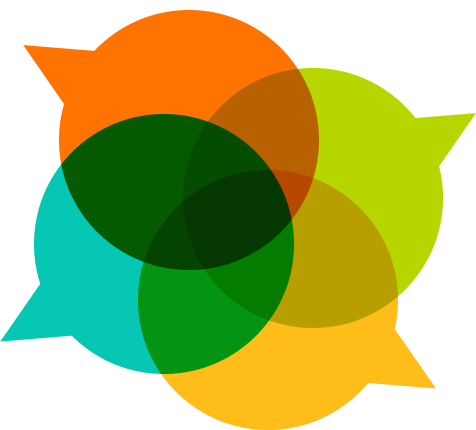Sent this to my research group, thought I’d share it with you as well. I was quite skeptical to Challenges as they emerged at P2PU as an alternative to courses, but seeing this German MOOC, I got a sense for how challenges could be very powerful (the course is actually meant to be synchronous, but I started a few weeks late, so all I’m seeing is canned content - yet it’s definitively giving me a sense of community, and it’s feels very useful for conceptual learning). Also reminds me of John Britton’s “draw the Internet” assignment.
One difference from Challenges is perhaps that there is significant new pre-made content (lot’s of high quality and well thought-out videos), and there are enough people signed up (thousands) that the few percentage who will actually make a creative contribution still end up being significant… And also I still think this works better for mastery/conceptual topics than let’s say cyberpunk literature.
I’ve been working a lot with Coursera courses (for UToronto), where the discussion forum is completely separate from the “content” - and there is rarely much useful in the forums (their forums are also not nicely designed), this way of embedding the content with the videos seems to work much better.
MOOCs get a lot of flak, but it’s fun to find examples of things that
work very well. iversity is a Berlin MOOC startup that funds
individual courses (ie. instead of doing deals with prestigious
universities, they find individual professors and fund them). No idea
how they plan to make money, but anyway.I wanted to practice my German, and signed up for a course on
mathematical thinking (my math, especially conceptual, is also really
poor, and is really holding me back when it comes to learning more
advanced stats/machine learning etc). It’s taught by a crazy pair of
professors who include lot’s of fun historical reenactments and stuff
in the course. But it’s also taught in kind of a guided discovery
model - mixing geometry and algebra, so you might be asked to draw
lot’s of different squares, and try to find the rule for squares that
can become a larger square… You stop the video, and spend 20 minutes
experimenting with drawing etc. Then you look at what people have
posted - images of their notes, computer drawings, runnable source
code in three different languages, etc. Very rich! (Also reminds me of
research on students seeing multiple representations). Then you play
the next video, and find out that you just proved the binomial
theorem!There’s still a lot more that could be done, but I already found it
quite rich (and much more interesting than my calculus class at UTSC!It’s also interesting because I don’t think I could easily get
students in a for-credit university course to even make these kinds of
contributions, unless I forced them to (giving credit etc)… Of
course, perhaps only 5% of the students actually upload something…
but maybe that’s enough - if you have 2000 students…(also a great example of giving you a feel of community, without
spending tons of time on introductions and biographies - in many
Coursera courses people post tons of introductions in the first week,
and then it kind of dies out).I attach a screenshot, since you have to login to see the page (this
is just page 1/3):
Apparently I can’t put an image in the post since I’m a new user, so click on this link manually 

